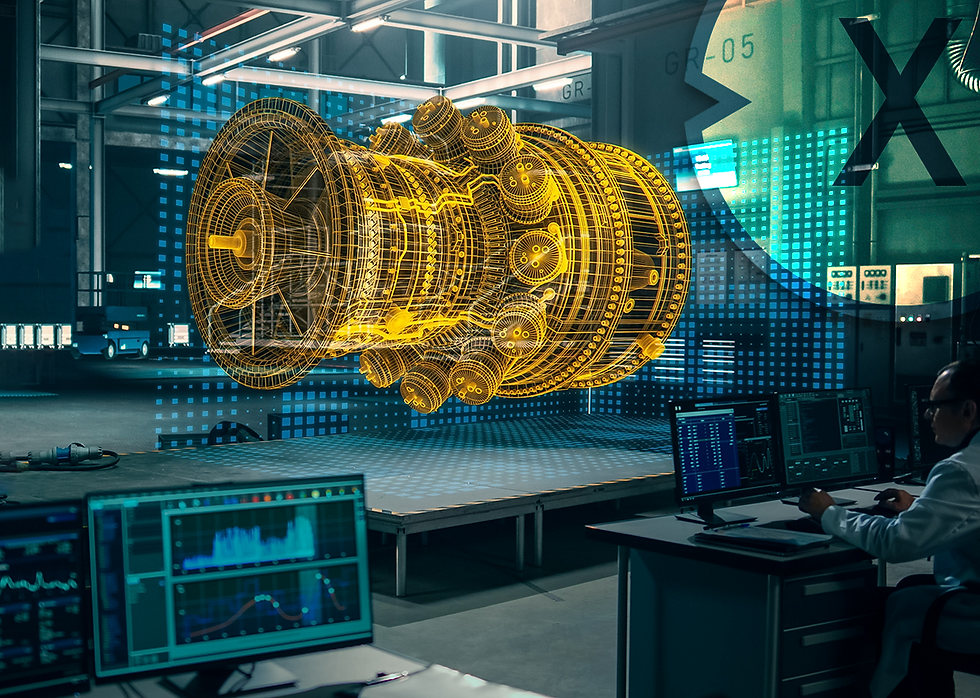Revolutionizing Industrial Skills with Virtual Reality
- viroinnovation
- Jan 24
- 3 min read
Updated: Jan 31

In an ever-evolving industrial landscape, the demand for skilled workers who can adapt to new technologies and workflows has never been higher. Virtual Reality (VR) has emerged as a groundbreaking tool to bridge the gap between traditional training methods and the dynamic needs of modern industries. By creating immersive and interactive learning environments, VR enables industrial workers to enhance their skills, master new workflows, and stay ahead in their fields. Let’s explore how VR is transforming industrial training and the advantages it offers.
1. Immersive Learning Environments
Traditional training methods often rely on manuals, videos, or in-person demonstrations, which can be time-consuming and lack engagement. VR, on the other hand, places workers in a fully immersive environment where they can interact with virtual machinery, tools, and workflows. These realistic simulations allow workers to gain hands-on experience in a safe and controlled setting, making complex concepts easier to understand and retain.
For instance, VR can simulate hazardous environments, such as oil rigs, manufacturing floors, or construction sites, enabling workers to practice safety protocols and emergency responses without real-world risks. This experiential learning significantly enhances comprehension and confidence.
2. Enhanced Skill Development
One of VR’s most significant advantages is its ability to facilitate skill development through repetition and real-time feedback. Industrial workers can repeatedly practice tasks—such as operating machinery, assembling components, or troubleshooting equipment—until they achieve proficiency. Mistakes made during VR training are low-stakes and serve as valuable learning opportunities, helping workers improve without the fear of costly errors in real-world scenarios.
In industries like manufacturing and logistics, where precision is crucial, VR allows trainees to perfect their techniques before applying them on the job. This level of preparation ensures that workers are highly skilled and ready to perform efficiently from day one.
3. Accelerated Adoption of New Workflows
Industries are continually evolving, adopting new technologies and workflows to stay competitive. VR training programs can be rapidly updated to reflect these changes, allowing workers to learn and adapt quickly. For example, when new machinery is introduced, VR simulations can provide a detailed walkthrough of its operation and maintenance, helping workers familiarize themselves before the equipment is deployed.
This flexibility is particularly beneficial for industries with high turnover rates or those undergoing digital transformation. By providing on-demand and up-to-date training, VR ensures that workers remain aligned with the latest industry standards and practices.
4. Cost-Effective and Scalable Training
Developing and delivering traditional training programs often involves significant expenses, including materials, equipment, and instructor time. VR eliminates many of these costs by creating reusable virtual environments that can be accessed anytime and anywhere. Workers can train individually or in groups without the need for physical resources, making VR a cost-effective solution for large-scale workforce development.
Additionally, VR training can be scaled to accommodate multiple locations and teams. Remote workers can access the same high-quality training as their on-site counterparts, ensuring consistency and inclusivity across the organization.
5. Increased Safety and Reduced Downtime
Safety is a top priority in industrial settings, and VR provides a risk-free environment for workers to learn and practice without endangering themselves or others. Whether it’s navigating a confined space, handling hazardous materials, or responding to emergencies, VR training prepares workers for real-world challenges without compromising safety.
Moreover, VR minimizes downtime by allowing workers to train without interrupting daily operations. Instead of shutting down equipment or production lines for training purposes, companies can use VR to simulate real-world scenarios and keep operations running smoothly.
6. Data-Driven Insights for Continuous Improvement
VR training platforms often include analytics and tracking features that provide valuable insights into worker performance. Metrics such as task completion time, error rates, and skill progression can help trainers identify areas where workers need additional support. These data-driven insights enable continuous improvement and help companies tailor their training programs to meet individual and team needs effectively.
Real-World Applications of VR in Industrial Training
Oil and Gas: Workers practice handling hazardous materials, emergency protocols, and equipment maintenance in simulated high-risk environments.
Manufacturing: Trainees learn to operate complex machinery and optimize production workflows without disrupting operations.
Construction: VR teaches safety measures, equipment handling, and project planning in realistic job site simulations.
Logistics: Workers improve efficiency in warehouse operations, inventory management, and vehicle navigation.
Virtual Reality is revolutionizing industrial training by providing immersive, flexible, and cost-effective solutions that cater to the unique demands of modern industries. By enabling workers to upskill, adapt to new workflows, and master complex tasks in a safe and engaging environment, VR is paving the way for a more efficient, skilled, and future-ready workforce. As industries continue to innovate, VR will remain a vital tool in empowering workers and driving operational excellence.



Comments